-
EXECUTIVE SUMMARY
-
Market Overview
-
Key Findings
-
Market Segmentation
-
Competitive Landscape
-
Challenges and Opportunities
-
1.6.
-
Future Outlook
-
\r\n
-
MARKET INTRODUCTION
-
Definition
-
Scope of the study
- Research Objective
- Assumption
- Limitations
-
RESEARCH METHODOLOGY
-
Overview
-
Data Mining
-
Secondary Research
- Primary Interviews and Information Gathering Process
- Breakdown of Primary Respondents
-
3.4.
-
Primary Research
-
Forecasting Model
- Bottom-Up Approach
- Top-Down Approach
-
3.6.
-
Market Size Estimation
-
Data Triangulation
-
Validation
-
\r\n
-
MARKET
-
DYNAMICS
-
Overview
-
Drivers
-
Restraints
-
4.4.
-
Opportunities
-
MARKET FACTOR ANALYSIS
-
Value chain Analysis
-
Porter's Five Forces Analysis
- Bargaining Power of Suppliers
- Bargaining Power of Buyers
- Threat of New Entrants
- Threat of Substitutes
- Intensity of Rivalry
-
COVID-19
- Market Impact Analysis
- Regional Impact
- Opportunity and Threat Analysis
-
Impact Analysis
-
\r\n
-
AUTOMOTIVE
-
COLLISION AVOIDANCE SYSTEM MARKET, BY TECHNOLOGY (USD BILLION)
-
Laser
-
Sensors
-
Radar Sensors
-
Camera-Based Systems
-
Ultrasonic
-
Sensors
-
AUTOMOTIVE COLLISION AVOIDANCE SYSTEM MARKET, BY TYPE (USD BILLION)
-
Adaptive Cruise Control
-
Automatic Emergency Braking
-
7.3.
-
Lane Departure Warning
-
Blind Spot Detection
-
AUTOMOTIVE COLLISION
-
AVOIDANCE SYSTEM MARKET, BY END USE (USD BILLION)
-
Passenger Vehicles
-
Commercial Vehicles
-
Two Wheelers
-
Heavy-Duty Vehicles
-
AUTOMOTIVE COLLISION AVOIDANCE SYSTEM MARKET, BY SENSOR TYPE (USD BILLION)
-
Lidar
-
Radar
-
Camera
-
Infrared
-
10.
-
AUTOMOTIVE COLLISION AVOIDANCE SYSTEM MARKET, BY REGIONAL (USD BILLION)
-
10.1.
-
North America
-
10.2.1.
-
Germany
-
10.2.5.
-
Italy
-
10.3.1.
-
China
-
10.3.5.
-
Malaysia
-
10.4.3.
-
Argentina
-
Countries
-
\r\n
-
US
-
Canada
-
Europe
- UK
- France
- Russia
- Spain
- Rest of Europe
-
APAC
- India
- Japan
- South Korea
- Thailand
- Indonesia
- Rest of APAC
-
South America
- Brazil
- Mexico
- Rest of South America
-
MEA
- GCC
- South Africa
- Rest of MEA
-
COMPETITIVE LANDSCAPE
-
Overview
-
Competitive Analysis
-
Market share Analysis
-
Major Growth Strategy in the Automotive
-
Collision Avoidance System Market
-
Competitive Benchmarking
-
11.6.
-
Leading Players in Terms of Number of Developments in the Automotive Collision Avoidance
-
System Market
-
Key developments and growth strategies
- New
- Merger & Acquisitions
-
Product Launch/Service Deployment
-
11.7.3.
-
Joint Ventures
-
Major Players Financial Matrix
- Sales and
- Major Players R&D Expenditure. 2023
-
Operating Income
-
12.
-
COMPANY PROFILES
-
Continental
- Financial Overview
- Key Developments
- SWOT Analysis
- Key Strategies
-
12.1.2.
-
Products Offered
-
Ford Motor
- Financial Overview
- Products Offered
- Key Developments
- SWOT
- Key Strategies
-
Analysis
-
Mobileye
- Financial
- Products Offered
- Key Developments
- Key Strategies
-
Overview
-
12.3.4.
-
SWOT Analysis
-
ZF Friedrichshafen
- Products Offered
- Key Developments
- SWOT Analysis
- Key Strategies
-
12.4.1.
-
Financial Overview
-
Hyundai
- Financial Overview
- Products Offered
- Key Developments
- SWOT Analysis
- Key Strategies
-
Aptiv
- Products Offered
- Key Developments
- SWOT Analysis
- Key Strategies
-
12.6.1.
-
Financial Overview
-
Denso
- Products Offered
- Key Developments
- SWOT Analysis
- Key Strategies
-
12.7.1.
-
Financial Overview
-
Toyota
- Financial Overview
- Products Offered
- Key Developments
- SWOT Analysis
- Key Strategies
-
Tesla
- Products Offered
- Key Developments
- SWOT Analysis
- Key Strategies
-
12.9.1.
-
Financial Overview
-
Honda
- Financial Overview
- Products Offered
- Key
- SWOT Analysis
- Key Strategies
- Financial Overview
- Products Offered
- Key Developments
- SWOT Analysis
- Key Strategies
-
Developments
-
12.11.
-
Volkswagen
-
Robert Bosch
- Financial Overview
- Products
- Key Developments
- SWOT Analysis
-
Offered
-
12.12.5.
-
Key Strategies
-
Daimler
- Financial Overview
- Key Developments
- SWOT Analysis
- Key Strategies
-
12.13.2.
-
Products Offered
-
General Motors
- Financial Overview
- Products Offered
- Key Developments
- SWOT
- Key Strategies
-
Analysis
-
Nissan
- Financial
- Products Offered
- Key Developments
- Key Strategies
-
Overview
-
12.15.4.
-
SWOT Analysis
-
APPENDIX
-
References
-
Related Reports
-
LIST OF TABLES
-
\r\nTABLE 1. LIST OF ASSUMPTIONS
-
NORTH AMERICA AUTOMOTIVE COLLISION AVOIDANCE SYSTEM MARKET SIZE ESTIMATES
-
& FORECAST, BY TECHNOLOGY, 2019-2035 (USD BILLIONS)
-
NORTH AMERICA
-
AUTOMOTIVE COLLISION AVOIDANCE SYSTEM MARKET SIZE ESTIMATES & FORECAST, BY TYPE,
-
NORTH AMERICA AUTOMOTIVE COLLISION AVOIDANCE
-
SYSTEM MARKET SIZE ESTIMATES & FORECAST, BY END USE, 2019-2035 (USD BILLIONS)
-
NORTH AMERICA AUTOMOTIVE COLLISION AVOIDANCE SYSTEM MARKET SIZE ESTIMATES
-
& FORECAST, BY SENSOR TYPE, 2019-2035 (USD BILLIONS)
-
NORTH AMERICA
-
AUTOMOTIVE COLLISION AVOIDANCE SYSTEM MARKET SIZE ESTIMATES & FORECAST, BY REGIONAL,
-
US AUTOMOTIVE COLLISION AVOIDANCE SYSTEM
-
MARKET SIZE ESTIMATES & FORECAST, BY TECHNOLOGY, 2019-2035 (USD BILLIONS)
-
US AUTOMOTIVE COLLISION AVOIDANCE SYSTEM MARKET SIZE ESTIMATES &
-
FORECAST, BY TYPE, 2019-2035 (USD BILLIONS)
-
US AUTOMOTIVE COLLISION
-
AVOIDANCE SYSTEM MARKET SIZE ESTIMATES & FORECAST, BY END USE, 2019-2035 (USD
-
BILLIONS)
-
US AUTOMOTIVE COLLISION AVOIDANCE SYSTEM MARKET SIZE ESTIMATES
-
& FORECAST, BY SENSOR TYPE, 2019-2035 (USD BILLIONS)
-
US AUTOMOTIVE
-
COLLISION AVOIDANCE SYSTEM MARKET SIZE ESTIMATES & FORECAST, BY REGIONAL, 2019-2035
-
(USD BILLIONS)
-
CANADA AUTOMOTIVE COLLISION AVOIDANCE SYSTEM MARKET
-
SIZE ESTIMATES & FORECAST, BY TECHNOLOGY, 2019-2035 (USD BILLIONS)
-
TABLE
-
CANADA AUTOMOTIVE COLLISION AVOIDANCE SYSTEM MARKET SIZE ESTIMATES & FORECAST,
-
BY TYPE, 2019-2035 (USD BILLIONS)
-
CANADA AUTOMOTIVE COLLISION AVOIDANCE
-
SYSTEM MARKET SIZE ESTIMATES & FORECAST, BY END USE, 2019-2035 (USD BILLIONS)
-
CANADA AUTOMOTIVE COLLISION AVOIDANCE SYSTEM MARKET SIZE ESTIMATES
-
& FORECAST, BY SENSOR TYPE, 2019-2035 (USD BILLIONS)
-
CANADA
-
AUTOMOTIVE COLLISION AVOIDANCE SYSTEM MARKET SIZE ESTIMATES & FORECAST, BY REGIONAL,
-
EUROPE AUTOMOTIVE COLLISION AVOIDANCE SYSTEM
-
MARKET SIZE ESTIMATES & FORECAST, BY TECHNOLOGY, 2019-2035 (USD BILLIONS)
-
EUROPE AUTOMOTIVE COLLISION AVOIDANCE SYSTEM MARKET SIZE ESTIMATES &
-
FORECAST, BY TYPE, 2019-2035 (USD BILLIONS)
-
EUROPE AUTOMOTIVE COLLISION
-
AVOIDANCE SYSTEM MARKET SIZE ESTIMATES & FORECAST, BY END USE, 2019-2035 (USD
-
BILLIONS)
-
EUROPE AUTOMOTIVE COLLISION AVOIDANCE SYSTEM MARKET SIZE
-
ESTIMATES & FORECAST, BY SENSOR TYPE, 2019-2035 (USD BILLIONS)
-
TABLE 21.
-
EUROPE AUTOMOTIVE COLLISION AVOIDANCE SYSTEM MARKET SIZE ESTIMATES & FORECAST,
-
BY REGIONAL, 2019-2035 (USD BILLIONS)
-
GERMANY AUTOMOTIVE COLLISION
-
AVOIDANCE SYSTEM MARKET SIZE ESTIMATES & FORECAST, BY TECHNOLOGY, 2019-2035
-
(USD BILLIONS)
-
GERMANY AUTOMOTIVE COLLISION AVOIDANCE SYSTEM MARKET
-
SIZE ESTIMATES & FORECAST, BY TYPE, 2019-2035 (USD BILLIONS)
-
TABLE 24.
-
GERMANY AUTOMOTIVE COLLISION AVOIDANCE SYSTEM MARKET SIZE ESTIMATES & FORECAST,
-
BY END USE, 2019-2035 (USD BILLIONS)
-
GERMANY AUTOMOTIVE COLLISION
-
AVOIDANCE SYSTEM MARKET SIZE ESTIMATES & FORECAST, BY SENSOR TYPE, 2019-2035
-
(USD BILLIONS)
-
GERMANY AUTOMOTIVE COLLISION AVOIDANCE SYSTEM MARKET
-
SIZE ESTIMATES & FORECAST, BY REGIONAL, 2019-2035 (USD BILLIONS)
-
TABLE
-
UK AUTOMOTIVE COLLISION AVOIDANCE SYSTEM MARKET SIZE ESTIMATES & FORECAST,
-
BY TECHNOLOGY, 2019-2035 (USD BILLIONS)
-
UK AUTOMOTIVE COLLISION
-
AVOIDANCE SYSTEM MARKET SIZE ESTIMATES & FORECAST, BY TYPE, 2019-2035 (USD BILLIONS)
-
UK AUTOMOTIVE COLLISION AVOIDANCE SYSTEM MARKET SIZE ESTIMATES &
-
FORECAST, BY END USE, 2019-2035 (USD BILLIONS)
-
UK AUTOMOTIVE COLLISION
-
AVOIDANCE SYSTEM MARKET SIZE ESTIMATES & FORECAST, BY SENSOR TYPE, 2019-2035
-
(USD BILLIONS)
-
UK AUTOMOTIVE COLLISION AVOIDANCE SYSTEM MARKET SIZE
-
ESTIMATES & FORECAST, BY REGIONAL, 2019-2035 (USD BILLIONS)
-
TABLE 32.
-
FRANCE AUTOMOTIVE COLLISION AVOIDANCE SYSTEM MARKET SIZE ESTIMATES & FORECAST,
-
BY TECHNOLOGY, 2019-2035 (USD BILLIONS)
-
FRANCE AUTOMOTIVE COLLISION
-
AVOIDANCE SYSTEM MARKET SIZE ESTIMATES & FORECAST, BY TYPE, 2019-2035 (USD BILLIONS)
-
FRANCE AUTOMOTIVE COLLISION AVOIDANCE SYSTEM MARKET SIZE ESTIMATES
-
& FORECAST, BY END USE, 2019-2035 (USD BILLIONS)
-
FRANCE AUTOMOTIVE
-
COLLISION AVOIDANCE SYSTEM MARKET SIZE ESTIMATES & FORECAST, BY SENSOR TYPE,
-
FRANCE AUTOMOTIVE COLLISION AVOIDANCE SYSTEM
-
MARKET SIZE ESTIMATES & FORECAST, BY REGIONAL, 2019-2035 (USD BILLIONS)
-
RUSSIA AUTOMOTIVE COLLISION AVOIDANCE SYSTEM MARKET SIZE ESTIMATES &
-
FORECAST, BY TECHNOLOGY, 2019-2035 (USD BILLIONS)
-
RUSSIA AUTOMOTIVE
-
COLLISION AVOIDANCE SYSTEM MARKET SIZE ESTIMATES & FORECAST, BY TYPE, 2019-2035
-
(USD BILLIONS)
-
RUSSIA AUTOMOTIVE COLLISION AVOIDANCE SYSTEM MARKET
-
SIZE ESTIMATES & FORECAST, BY END USE, 2019-2035 (USD BILLIONS)
-
TABLE
-
RUSSIA AUTOMOTIVE COLLISION AVOIDANCE SYSTEM MARKET SIZE ESTIMATES & FORECAST,
-
BY SENSOR TYPE, 2019-2035 (USD BILLIONS)
-
RUSSIA AUTOMOTIVE COLLISION
-
AVOIDANCE SYSTEM MARKET SIZE ESTIMATES & FORECAST, BY REGIONAL, 2019-2035 (USD
-
BILLIONS)
-
ITALY AUTOMOTIVE COLLISION AVOIDANCE SYSTEM MARKET SIZE
-
ESTIMATES & FORECAST, BY TECHNOLOGY, 2019-2035 (USD BILLIONS)
-
TABLE 43.
-
ITALY AUTOMOTIVE COLLISION AVOIDANCE SYSTEM MARKET SIZE ESTIMATES & FORECAST,
-
BY TYPE, 2019-2035 (USD BILLIONS)
-
ITALY AUTOMOTIVE COLLISION AVOIDANCE
-
SYSTEM MARKET SIZE ESTIMATES & FORECAST, BY END USE, 2019-2035 (USD BILLIONS)
-
ITALY AUTOMOTIVE COLLISION AVOIDANCE SYSTEM MARKET SIZE ESTIMATES
-
& FORECAST, BY SENSOR TYPE, 2019-2035 (USD BILLIONS)
-
ITALY AUTOMOTIVE
-
COLLISION AVOIDANCE SYSTEM MARKET SIZE ESTIMATES & FORECAST, BY REGIONAL, 2019-2035
-
(USD BILLIONS)
-
SPAIN AUTOMOTIVE COLLISION AVOIDANCE SYSTEM MARKET
-
SIZE ESTIMATES & FORECAST, BY TECHNOLOGY, 2019-2035 (USD BILLIONS)
-
TABLE
-
SPAIN AUTOMOTIVE COLLISION AVOIDANCE SYSTEM MARKET SIZE ESTIMATES & FORECAST,
-
BY TYPE, 2019-2035 (USD BILLIONS)
-
SPAIN AUTOMOTIVE COLLISION AVOIDANCE
-
SYSTEM MARKET SIZE ESTIMATES & FORECAST, BY END USE, 2019-2035 (USD BILLIONS)
-
SPAIN AUTOMOTIVE COLLISION AVOIDANCE SYSTEM MARKET SIZE ESTIMATES
-
& FORECAST, BY SENSOR TYPE, 2019-2035 (USD BILLIONS)
-
SPAIN AUTOMOTIVE
-
COLLISION AVOIDANCE SYSTEM MARKET SIZE ESTIMATES & FORECAST, BY REGIONAL, 2019-2035
-
(USD BILLIONS)
-
REST OF EUROPE AUTOMOTIVE COLLISION AVOIDANCE SYSTEM
-
MARKET SIZE ESTIMATES & FORECAST, BY TECHNOLOGY, 2019-2035 (USD BILLIONS)
-
REST OF EUROPE AUTOMOTIVE COLLISION AVOIDANCE SYSTEM MARKET SIZE ESTIMATES
-
& FORECAST, BY TYPE, 2019-2035 (USD BILLIONS)
-
REST OF EUROPE
-
AUTOMOTIVE COLLISION AVOIDANCE SYSTEM MARKET SIZE ESTIMATES & FORECAST, BY END
-
USE, 2019-2035 (USD BILLIONS)
-
REST OF EUROPE AUTOMOTIVE COLLISION
-
AVOIDANCE SYSTEM MARKET SIZE ESTIMATES & FORECAST, BY SENSOR TYPE, 2019-2035
-
(USD BILLIONS)
-
REST OF EUROPE AUTOMOTIVE COLLISION AVOIDANCE SYSTEM
-
MARKET SIZE ESTIMATES & FORECAST, BY REGIONAL, 2019-2035 (USD BILLIONS)
-
APAC AUTOMOTIVE COLLISION AVOIDANCE SYSTEM MARKET SIZE ESTIMATES &
-
FORECAST, BY TECHNOLOGY, 2019-2035 (USD BILLIONS)
-
APAC AUTOMOTIVE
-
COLLISION AVOIDANCE SYSTEM MARKET SIZE ESTIMATES & FORECAST, BY TYPE, 2019-2035
-
(USD BILLIONS)
-
APAC AUTOMOTIVE COLLISION AVOIDANCE SYSTEM MARKET
-
SIZE ESTIMATES & FORECAST, BY END USE, 2019-2035 (USD BILLIONS)
-
TABLE
-
APAC AUTOMOTIVE COLLISION AVOIDANCE SYSTEM MARKET SIZE ESTIMATES & FORECAST,
-
BY SENSOR TYPE, 2019-2035 (USD BILLIONS)
-
APAC AUTOMOTIVE COLLISION
-
AVOIDANCE SYSTEM MARKET SIZE ESTIMATES & FORECAST, BY REGIONAL, 2019-2035 (USD
-
BILLIONS)
-
CHINA AUTOMOTIVE COLLISION AVOIDANCE SYSTEM MARKET SIZE
-
ESTIMATES & FORECAST, BY TECHNOLOGY, 2019-2035 (USD BILLIONS)
-
TABLE 63.
-
CHINA AUTOMOTIVE COLLISION AVOIDANCE SYSTEM MARKET SIZE ESTIMATES & FORECAST,
-
BY TYPE, 2019-2035 (USD BILLIONS)
-
CHINA AUTOMOTIVE COLLISION AVOIDANCE
-
SYSTEM MARKET SIZE ESTIMATES & FORECAST, BY END USE, 2019-2035 (USD BILLIONS)
-
CHINA AUTOMOTIVE COLLISION AVOIDANCE SYSTEM MARKET SIZE ESTIMATES
-
& FORECAST, BY SENSOR TYPE, 2019-2035 (USD BILLIONS)
-
CHINA AUTOMOTIVE
-
COLLISION AVOIDANCE SYSTEM MARKET SIZE ESTIMATES & FORECAST, BY REGIONAL, 2019-2035
-
(USD BILLIONS)
-
INDIA AUTOMOTIVE COLLISION AVOIDANCE SYSTEM MARKET
-
SIZE ESTIMATES & FORECAST, BY TECHNOLOGY, 2019-2035 (USD BILLIONS)
-
TABLE
-
INDIA AUTOMOTIVE COLLISION AVOIDANCE SYSTEM MARKET SIZE ESTIMATES & FORECAST,
-
BY TYPE, 2019-2035 (USD BILLIONS)
-
INDIA AUTOMOTIVE COLLISION AVOIDANCE
-
SYSTEM MARKET SIZE ESTIMATES & FORECAST, BY END USE, 2019-2035 (USD BILLIONS)
-
INDIA AUTOMOTIVE COLLISION AVOIDANCE SYSTEM MARKET SIZE ESTIMATES
-
& FORECAST, BY SENSOR TYPE, 2019-2035 (USD BILLIONS)
-
INDIA AUTOMOTIVE
-
COLLISION AVOIDANCE SYSTEM MARKET SIZE ESTIMATES & FORECAST, BY REGIONAL, 2019-2035
-
(USD BILLIONS)
-
JAPAN AUTOMOTIVE COLLISION AVOIDANCE SYSTEM MARKET
-
SIZE ESTIMATES & FORECAST, BY TECHNOLOGY, 2019-2035 (USD BILLIONS)
-
TABLE
-
JAPAN AUTOMOTIVE COLLISION AVOIDANCE SYSTEM MARKET SIZE ESTIMATES & FORECAST,
-
BY TYPE, 2019-2035 (USD BILLIONS)
-
JAPAN AUTOMOTIVE COLLISION AVOIDANCE
-
SYSTEM MARKET SIZE ESTIMATES & FORECAST, BY END USE, 2019-2035 (USD BILLIONS)
-
JAPAN AUTOMOTIVE COLLISION AVOIDANCE SYSTEM MARKET SIZE ESTIMATES
-
& FORECAST, BY SENSOR TYPE, 2019-2035 (USD BILLIONS)
-
JAPAN AUTOMOTIVE
-
COLLISION AVOIDANCE SYSTEM MARKET SIZE ESTIMATES & FORECAST, BY REGIONAL, 2019-2035
-
(USD BILLIONS)
-
SOUTH KOREA AUTOMOTIVE COLLISION AVOIDANCE SYSTEM
-
MARKET SIZE ESTIMATES & FORECAST, BY TECHNOLOGY, 2019-2035 (USD BILLIONS)
-
SOUTH KOREA AUTOMOTIVE COLLISION AVOIDANCE SYSTEM MARKET SIZE ESTIMATES
-
& FORECAST, BY TYPE, 2019-2035 (USD BILLIONS)
-
SOUTH KOREA AUTOMOTIVE
-
COLLISION AVOIDANCE SYSTEM MARKET SIZE ESTIMATES & FORECAST, BY END USE, 2019-2035
-
(USD BILLIONS)
-
SOUTH KOREA AUTOMOTIVE COLLISION AVOIDANCE SYSTEM
-
MARKET SIZE ESTIMATES & FORECAST, BY SENSOR TYPE, 2019-2035 (USD BILLIONS)
-
SOUTH KOREA AUTOMOTIVE COLLISION AVOIDANCE SYSTEM MARKET SIZE ESTIMATES
-
& FORECAST, BY REGIONAL, 2019-2035 (USD BILLIONS)
-
MALAYSIA AUTOMOTIVE
-
COLLISION AVOIDANCE SYSTEM MARKET SIZE ESTIMATES & FORECAST, BY TECHNOLOGY,
-
MALAYSIA AUTOMOTIVE COLLISION AVOIDANCE
-
SYSTEM MARKET SIZE ESTIMATES & FORECAST, BY TYPE, 2019-2035 (USD BILLIONS)
-
MALAYSIA AUTOMOTIVE COLLISION AVOIDANCE SYSTEM MARKET SIZE ESTIMATES
-
& FORECAST, BY END USE, 2019-2035 (USD BILLIONS)
-
MALAYSIA AUTOMOTIVE
-
COLLISION AVOIDANCE SYSTEM MARKET SIZE ESTIMATES & FORECAST, BY SENSOR TYPE,
-
MALAYSIA AUTOMOTIVE COLLISION AVOIDANCE
-
SYSTEM MARKET SIZE ESTIMATES & FORECAST, BY REGIONAL, 2019-2035 (USD BILLIONS)
-
THAILAND AUTOMOTIVE COLLISION AVOIDANCE SYSTEM MARKET SIZE ESTIMATES
-
& FORECAST, BY TECHNOLOGY, 2019-2035 (USD BILLIONS)
-
THAILAND
-
AUTOMOTIVE COLLISION AVOIDANCE SYSTEM MARKET SIZE ESTIMATES & FORECAST, BY TYPE,
-
THAILAND AUTOMOTIVE COLLISION AVOIDANCE
-
SYSTEM MARKET SIZE ESTIMATES & FORECAST, BY END USE, 2019-2035 (USD BILLIONS)
-
THAILAND AUTOMOTIVE COLLISION AVOIDANCE SYSTEM MARKET SIZE ESTIMATES
-
& FORECAST, BY SENSOR TYPE, 2019-2035 (USD BILLIONS)
-
THAILAND
-
AUTOMOTIVE COLLISION AVOIDANCE SYSTEM MARKET SIZE ESTIMATES & FORECAST, BY REGIONAL,
-
INDONESIA AUTOMOTIVE COLLISION AVOIDANCE
-
SYSTEM MARKET SIZE ESTIMATES & FORECAST, BY TECHNOLOGY, 2019-2035 (USD BILLIONS)
-
INDONESIA AUTOMOTIVE COLLISION AVOIDANCE SYSTEM MARKET SIZE ESTIMATES
-
& FORECAST, BY TYPE, 2019-2035 (USD BILLIONS)
-
INDONESIA AUTOMOTIVE
-
COLLISION AVOIDANCE SYSTEM MARKET SIZE ESTIMATES & FORECAST, BY END USE, 2019-2035
-
(USD BILLIONS)
-
INDONESIA AUTOMOTIVE COLLISION AVOIDANCE SYSTEM MARKET
-
SIZE ESTIMATES & FORECAST, BY SENSOR TYPE, 2019-2035 (USD BILLIONS)
-
TABLE
-
INDONESIA AUTOMOTIVE COLLISION AVOIDANCE SYSTEM MARKET SIZE ESTIMATES &
-
FORECAST, BY REGIONAL, 2019-2035 (USD BILLIONS)
-
REST OF APAC AUTOMOTIVE
-
COLLISION AVOIDANCE SYSTEM MARKET SIZE ESTIMATES & FORECAST, BY TECHNOLOGY,
-
REST OF APAC AUTOMOTIVE COLLISION AVOIDANCE
-
SYSTEM MARKET SIZE ESTIMATES & FORECAST, BY TYPE, 2019-2035 (USD BILLIONS)
-
REST OF APAC AUTOMOTIVE COLLISION AVOIDANCE SYSTEM MARKET SIZE ESTIMATES
-
& FORECAST, BY END USE, 2019-2035 (USD BILLIONS)
-
REST OF APAC
-
AUTOMOTIVE COLLISION AVOIDANCE SYSTEM MARKET SIZE ESTIMATES & FORECAST, BY SENSOR
-
TYPE, 2019-2035 (USD BILLIONS)
-
REST OF APAC AUTOMOTIVE COLLISION
-
AVOIDANCE SYSTEM MARKET SIZE ESTIMATES & FORECAST, BY REGIONAL, 2019-2035 (USD
-
BILLIONS)
-
SOUTH AMERICA AUTOMOTIVE COLLISION AVOIDANCE SYSTEM MARKET
-
SIZE ESTIMATES & FORECAST, BY TECHNOLOGY, 2019-2035 (USD BILLIONS)
-
TABLE
-
SOUTH AMERICA AUTOMOTIVE COLLISION AVOIDANCE SYSTEM MARKET SIZE ESTIMATES &
-
FORECAST, BY TYPE, 2019-2035 (USD BILLIONS)
-
SOUTH AMERICA AUTOMOTIVE
-
COLLISION AVOIDANCE SYSTEM MARKET SIZE ESTIMATES & FORECAST, BY END USE, 2019-2035
-
(USD BILLIONS)
-
SOUTH AMERICA AUTOMOTIVE COLLISION AVOIDANCE SYSTEM
-
MARKET SIZE ESTIMATES & FORECAST, BY SENSOR TYPE, 2019-2035 (USD BILLIONS)
-
SOUTH AMERICA AUTOMOTIVE COLLISION AVOIDANCE SYSTEM MARKET SIZE ESTIMATES
-
& FORECAST, BY REGIONAL, 2019-2035 (USD BILLIONS)
-
BRAZIL AUTOMOTIVE
-
COLLISION AVOIDANCE SYSTEM MARKET SIZE ESTIMATES & FORECAST, BY TECHNOLOGY,
-
BRAZIL AUTOMOTIVE COLLISION AVOIDANCE
-
SYSTEM MARKET SIZE ESTIMATES & FORECAST, BY TYPE, 2019-2035 (USD BILLIONS)
-
BRAZIL AUTOMOTIVE COLLISION AVOIDANCE SYSTEM MARKET SIZE ESTIMATES
-
& FORECAST, BY END USE, 2019-2035 (USD BILLIONS)
-
BRAZIL AUTOMOTIVE
-
COLLISION AVOIDANCE SYSTEM MARKET SIZE ESTIMATES & FORECAST, BY SENSOR TYPE,
-
BRAZIL AUTOMOTIVE COLLISION AVOIDANCE
-
SYSTEM MARKET SIZE ESTIMATES & FORECAST, BY REGIONAL, 2019-2035 (USD BILLIONS)
-
MEXICO AUTOMOTIVE COLLISION AVOIDANCE SYSTEM MARKET SIZE ESTIMATES
-
& FORECAST, BY TECHNOLOGY, 2019-2035 (USD BILLIONS)
-
MEXICO
-
AUTOMOTIVE COLLISION AVOIDANCE SYSTEM MARKET SIZE ESTIMATES & FORECAST, BY TYPE,
-
MEXICO AUTOMOTIVE COLLISION AVOIDANCE
-
SYSTEM MARKET SIZE ESTIMATES & FORECAST, BY END USE, 2019-2035 (USD BILLIONS)
-
MEXICO AUTOMOTIVE COLLISION AVOIDANCE SYSTEM MARKET SIZE ESTIMATES
-
& FORECAST, BY SENSOR TYPE, 2019-2035 (USD BILLIONS)
-
MEXICO
-
AUTOMOTIVE COLLISION AVOIDANCE SYSTEM MARKET SIZE ESTIMATES & FORECAST, BY REGIONAL,
-
ARGENTINA AUTOMOTIVE COLLISION AVOIDANCE
-
SYSTEM MARKET SIZE ESTIMATES & FORECAST, BY TECHNOLOGY, 2019-2035 (USD BILLIONS)
-
ARGENTINA AUTOMOTIVE COLLISION AVOIDANCE SYSTEM MARKET SIZE ESTIMATES
-
& FORECAST, BY TYPE, 2019-2035 (USD BILLIONS)
-
ARGENTINA AUTOMOTIVE
-
COLLISION AVOIDANCE SYSTEM MARKET SIZE ESTIMATES & FORECAST, BY END USE, 2019-2035
-
(USD BILLIONS)
-
ARGENTINA AUTOMOTIVE COLLISION AVOIDANCE SYSTEM
-
MARKET SIZE ESTIMATES & FORECAST, BY SENSOR TYPE, 2019-2035 (USD BILLIONS)
-
ARGENTINA AUTOMOTIVE COLLISION AVOIDANCE SYSTEM MARKET SIZE ESTIMATES
-
& FORECAST, BY REGIONAL, 2019-2035 (USD BILLIONS)
-
REST OF SOUTH
-
AMERICA AUTOMOTIVE COLLISION AVOIDANCE SYSTEM MARKET SIZE ESTIMATES & FORECAST,
-
BY TECHNOLOGY, 2019-2035 (USD BILLIONS)
-
REST OF SOUTH AMERICA AUTOMOTIVE
-
COLLISION AVOIDANCE SYSTEM MARKET SIZE ESTIMATES & FORECAST, BY TYPE, 2019-2035
-
(USD BILLIONS)
-
REST OF SOUTH AMERICA AUTOMOTIVE COLLISION AVOIDANCE
-
SYSTEM MARKET SIZE ESTIMATES & FORECAST, BY END USE, 2019-2035 (USD BILLIONS)
-
REST OF SOUTH AMERICA AUTOMOTIVE COLLISION AVOIDANCE SYSTEM MARKET
-
SIZE ESTIMATES & FORECAST, BY SENSOR TYPE, 2019-2035 (USD BILLIONS)
-
TABLE
-
REST OF SOUTH AMERICA AUTOMOTIVE COLLISION AVOIDANCE SYSTEM MARKET SIZE ESTIMATES
-
& FORECAST, BY REGIONAL, 2019-2035 (USD BILLIONS)
-
MEA AUTOMOTIVE
-
COLLISION AVOIDANCE SYSTEM MARKET SIZE ESTIMATES & FORECAST, BY TECHNOLOGY,
-
MEA AUTOMOTIVE COLLISION AVOIDANCE SYSTEM
-
MARKET SIZE ESTIMATES & FORECAST, BY TYPE, 2019-2035 (USD BILLIONS)
-
TABLE
-
MEA AUTOMOTIVE COLLISION AVOIDANCE SYSTEM MARKET SIZE ESTIMATES & FORECAST,
-
BY END USE, 2019-2035 (USD BILLIONS)
-
MEA AUTOMOTIVE COLLISION AVOIDANCE
-
SYSTEM MARKET SIZE ESTIMATES & FORECAST, BY SENSOR TYPE, 2019-2035 (USD BILLIONS)
-
MEA AUTOMOTIVE COLLISION AVOIDANCE SYSTEM MARKET SIZE ESTIMATES
-
& FORECAST, BY REGIONAL, 2019-2035 (USD BILLIONS)
-
GCC COUNTRIES
-
AUTOMOTIVE COLLISION AVOIDANCE SYSTEM MARKET SIZE ESTIMATES & FORECAST, BY TECHNOLOGY,
-
GCC COUNTRIES AUTOMOTIVE COLLISION AVOIDANCE
-
SYSTEM MARKET SIZE ESTIMATES & FORECAST, BY TYPE, 2019-2035 (USD BILLIONS)
-
GCC COUNTRIES AUTOMOTIVE COLLISION AVOIDANCE SYSTEM MARKET SIZE ESTIMATES
-
& FORECAST, BY END USE, 2019-2035 (USD BILLIONS)
-
GCC COUNTRIES
-
AUTOMOTIVE COLLISION AVOIDANCE SYSTEM MARKET SIZE ESTIMATES & FORECAST, BY SENSOR
-
TYPE, 2019-2035 (USD BILLIONS)
-
GCC COUNTRIES AUTOMOTIVE COLLISION
-
AVOIDANCE SYSTEM MARKET SIZE ESTIMATES & FORECAST, BY REGIONAL, 2019-2035 (USD
-
BILLIONS)
-
SOUTH AFRICA AUTOMOTIVE COLLISION AVOIDANCE SYSTEM MARKET
-
SIZE ESTIMATES & FORECAST, BY TECHNOLOGY, 2019-2035 (USD BILLIONS)
-
TABLE
-
SOUTH AFRICA AUTOMOTIVE COLLISION AVOIDANCE SYSTEM MARKET SIZE ESTIMATES &
-
FORECAST, BY TYPE, 2019-2035 (USD BILLIONS)
-
SOUTH AFRICA AUTOMOTIVE
-
COLLISION AVOIDANCE SYSTEM MARKET SIZE ESTIMATES & FORECAST, BY END USE, 2019-2035
-
(USD BILLIONS)
-
SOUTH AFRICA AUTOMOTIVE COLLISION AVOIDANCE SYSTEM
-
MARKET SIZE ESTIMATES & FORECAST, BY SENSOR TYPE, 2019-2035 (USD BILLIONS)
-
SOUTH AFRICA AUTOMOTIVE COLLISION AVOIDANCE SYSTEM MARKET SIZE ESTIMATES
-
& FORECAST, BY REGIONAL, 2019-2035 (USD BILLIONS)
-
REST OF MEA
-
AUTOMOTIVE COLLISION AVOIDANCE SYSTEM MARKET SIZE ESTIMATES & FORECAST, BY TECHNOLOGY,
-
REST OF MEA AUTOMOTIVE COLLISION AVOIDANCE
-
SYSTEM MARKET SIZE ESTIMATES & FORECAST, BY TYPE, 2019-2035 (USD BILLIONS)
-
REST OF MEA AUTOMOTIVE COLLISION AVOIDANCE SYSTEM MARKET SIZE ESTIMATES
-
& FORECAST, BY END USE, 2019-2035 (USD BILLIONS)
-
REST OF MEA
-
AUTOMOTIVE COLLISION AVOIDANCE SYSTEM MARKET SIZE ESTIMATES & FORECAST, BY SENSOR
-
TYPE, 2019-2035 (USD BILLIONS)
-
REST OF MEA AUTOMOTIVE COLLISION
-
AVOIDANCE SYSTEM MARKET SIZE ESTIMATES & FORECAST, BY REGIONAL, 2019-2035 (USD
-
BILLIONS)
-
PRODUCT LAUNCH/PRODUCT DEVELOPMENT/APPROVAL
-
TABLE
-
ACQUISITION/PARTNERSHIP
-
\r\n
-
\r\n
-
\r\n
-
\r\n
-
\r\n
-
\r\n
-
\r\n
-
\r\n
-
\r\n
-
\r\n
-
\r\n
-
\r\n
-
\r\n
-
\r\n
-
\r\nLIST
-
OF FIGURES
-
\r\nFIGURE 1. MARKET SYNOPSIS
-
NORTH AMERICA AUTOMOTIVE
-
COLLISION AVOIDANCE SYSTEM MARKET ANALYSIS
-
US AUTOMOTIVE COLLISION
-
AVOIDANCE SYSTEM MARKET ANALYSIS BY TECHNOLOGY
-
US AUTOMOTIVE COLLISION
-
AVOIDANCE SYSTEM MARKET ANALYSIS BY TYPE
-
US AUTOMOTIVE COLLISION
-
AVOIDANCE SYSTEM MARKET ANALYSIS BY END USE
-
US AUTOMOTIVE COLLISION
-
AVOIDANCE SYSTEM MARKET ANALYSIS BY SENSOR TYPE
-
US AUTOMOTIVE COLLISION
-
AVOIDANCE SYSTEM MARKET ANALYSIS BY REGIONAL
-
CANADA AUTOMOTIVE COLLISION
-
AVOIDANCE SYSTEM MARKET ANALYSIS BY TECHNOLOGY
-
CANADA AUTOMOTIVE
-
COLLISION AVOIDANCE SYSTEM MARKET ANALYSIS BY TYPE
-
CANADA AUTOMOTIVE
-
COLLISION AVOIDANCE SYSTEM MARKET ANALYSIS BY END USE
-
CANADA AUTOMOTIVE
-
COLLISION AVOIDANCE SYSTEM MARKET ANALYSIS BY SENSOR TYPE
-
CANADA
-
AUTOMOTIVE COLLISION AVOIDANCE SYSTEM MARKET ANALYSIS BY REGIONAL
-
FIGURE 13.
-
EUROPE AUTOMOTIVE COLLISION AVOIDANCE SYSTEM MARKET ANALYSIS
-
GERMANY
-
AUTOMOTIVE COLLISION AVOIDANCE SYSTEM MARKET ANALYSIS BY TECHNOLOGY
-
FIGURE
-
GERMANY AUTOMOTIVE COLLISION AVOIDANCE SYSTEM MARKET ANALYSIS BY TYPE
-
FIGURE
-
GERMANY AUTOMOTIVE COLLISION AVOIDANCE SYSTEM MARKET ANALYSIS BY END USE
-
GERMANY AUTOMOTIVE COLLISION AVOIDANCE SYSTEM MARKET ANALYSIS BY SENSOR
-
TYPE
-
GERMANY AUTOMOTIVE COLLISION AVOIDANCE SYSTEM MARKET ANALYSIS
-
BY REGIONAL
-
UK AUTOMOTIVE COLLISION AVOIDANCE SYSTEM MARKET ANALYSIS
-
BY TECHNOLOGY
-
UK AUTOMOTIVE COLLISION AVOIDANCE SYSTEM MARKET ANALYSIS
-
BY TYPE
-
UK AUTOMOTIVE COLLISION AVOIDANCE SYSTEM MARKET ANALYSIS
-
BY END USE
-
UK AUTOMOTIVE COLLISION AVOIDANCE SYSTEM MARKET ANALYSIS
-
BY SENSOR TYPE
-
UK AUTOMOTIVE COLLISION AVOIDANCE SYSTEM MARKET
-
ANALYSIS BY REGIONAL
-
FRANCE AUTOMOTIVE COLLISION AVOIDANCE SYSTEM
-
MARKET ANALYSIS BY TECHNOLOGY
-
FRANCE AUTOMOTIVE COLLISION AVOIDANCE
-
SYSTEM MARKET ANALYSIS BY TYPE
-
FRANCE AUTOMOTIVE COLLISION AVOIDANCE
-
SYSTEM MARKET ANALYSIS BY END USE
-
FRANCE AUTOMOTIVE COLLISION AVOIDANCE
-
SYSTEM MARKET ANALYSIS BY SENSOR TYPE
-
FRANCE AUTOMOTIVE COLLISION
-
AVOIDANCE SYSTEM MARKET ANALYSIS BY REGIONAL
-
RUSSIA AUTOMOTIVE
-
COLLISION AVOIDANCE SYSTEM MARKET ANALYSIS BY TECHNOLOGY
-
RUSSIA
-
AUTOMOTIVE COLLISION AVOIDANCE SYSTEM MARKET ANALYSIS BY TYPE
-
RUSSIA
-
AUTOMOTIVE COLLISION AVOIDANCE SYSTEM MARKET ANALYSIS BY END USE
-
FIGURE 32.
-
RUSSIA AUTOMOTIVE COLLISION AVOIDANCE SYSTEM MARKET ANALYSIS BY SENSOR TYPE
-
RUSSIA AUTOMOTIVE COLLISION AVOIDANCE SYSTEM MARKET ANALYSIS BY REGIONAL
-
ITALY AUTOMOTIVE COLLISION AVOIDANCE SYSTEM MARKET ANALYSIS BY
-
TECHNOLOGY
-
ITALY AUTOMOTIVE COLLISION AVOIDANCE SYSTEM MARKET ANALYSIS
-
BY TYPE
-
ITALY AUTOMOTIVE COLLISION AVOIDANCE SYSTEM MARKET ANALYSIS
-
BY END USE
-
ITALY AUTOMOTIVE COLLISION AVOIDANCE SYSTEM MARKET ANALYSIS
-
BY SENSOR TYPE
-
ITALY AUTOMOTIVE COLLISION AVOIDANCE SYSTEM MARKET
-
ANALYSIS BY REGIONAL
-
SPAIN AUTOMOTIVE COLLISION AVOIDANCE SYSTEM
-
MARKET ANALYSIS BY TECHNOLOGY
-
SPAIN AUTOMOTIVE COLLISION AVOIDANCE
-
SYSTEM MARKET ANALYSIS BY TYPE
-
SPAIN AUTOMOTIVE COLLISION AVOIDANCE
-
SYSTEM MARKET ANALYSIS BY END USE
-
SPAIN AUTOMOTIVE COLLISION AVOIDANCE
-
SYSTEM MARKET ANALYSIS BY SENSOR TYPE
-
SPAIN AUTOMOTIVE COLLISION
-
AVOIDANCE SYSTEM MARKET ANALYSIS BY REGIONAL
-
REST OF EUROPE AUTOMOTIVE
-
COLLISION AVOIDANCE SYSTEM MARKET ANALYSIS BY TECHNOLOGY
-
REST OF
-
EUROPE AUTOMOTIVE COLLISION AVOIDANCE SYSTEM MARKET ANALYSIS BY TYPE
-
FIGURE
-
REST OF EUROPE AUTOMOTIVE COLLISION AVOIDANCE SYSTEM MARKET ANALYSIS BY END
-
USE
-
REST OF EUROPE AUTOMOTIVE COLLISION AVOIDANCE SYSTEM MARKET
-
ANALYSIS BY SENSOR TYPE
-
REST OF EUROPE AUTOMOTIVE COLLISION AVOIDANCE
-
SYSTEM MARKET ANALYSIS BY REGIONAL
-
APAC AUTOMOTIVE COLLISION AVOIDANCE
-
SYSTEM MARKET ANALYSIS
-
CHINA AUTOMOTIVE COLLISION AVOIDANCE SYSTEM
-
MARKET ANALYSIS BY TECHNOLOGY
-
CHINA AUTOMOTIVE COLLISION AVOIDANCE
-
SYSTEM MARKET ANALYSIS BY TYPE
-
CHINA AUTOMOTIVE COLLISION AVOIDANCE
-
SYSTEM MARKET ANALYSIS BY END USE
-
CHINA AUTOMOTIVE COLLISION AVOIDANCE
-
SYSTEM MARKET ANALYSIS BY SENSOR TYPE
-
CHINA AUTOMOTIVE COLLISION
-
AVOIDANCE SYSTEM MARKET ANALYSIS BY REGIONAL
-
INDIA AUTOMOTIVE COLLISION
-
AVOIDANCE SYSTEM MARKET ANALYSIS BY TECHNOLOGY
-
INDIA AUTOMOTIVE
-
COLLISION AVOIDANCE SYSTEM MARKET ANALYSIS BY TYPE
-
INDIA AUTOMOTIVE
-
COLLISION AVOIDANCE SYSTEM MARKET ANALYSIS BY END USE
-
INDIA AUTOMOTIVE
-
COLLISION AVOIDANCE SYSTEM MARKET ANALYSIS BY SENSOR TYPE
-
INDIA
-
AUTOMOTIVE COLLISION AVOIDANCE SYSTEM MARKET ANALYSIS BY REGIONAL
-
FIGURE 60.
-
JAPAN AUTOMOTIVE COLLISION AVOIDANCE SYSTEM MARKET ANALYSIS BY TECHNOLOGY
-
FIGURE
-
JAPAN AUTOMOTIVE COLLISION AVOIDANCE SYSTEM MARKET ANALYSIS BY TYPE
-
FIGURE
-
JAPAN AUTOMOTIVE COLLISION AVOIDANCE SYSTEM MARKET ANALYSIS BY END USE
-
FIGURE
-
JAPAN AUTOMOTIVE COLLISION AVOIDANCE SYSTEM MARKET ANALYSIS BY SENSOR TYPE
-
JAPAN AUTOMOTIVE COLLISION AVOIDANCE SYSTEM MARKET ANALYSIS BY REGIONAL
-
SOUTH KOREA AUTOMOTIVE COLLISION AVOIDANCE SYSTEM MARKET ANALYSIS
-
BY TECHNOLOGY
-
SOUTH KOREA AUTOMOTIVE COLLISION AVOIDANCE SYSTEM
-
MARKET ANALYSIS BY TYPE
-
SOUTH KOREA AUTOMOTIVE COLLISION AVOIDANCE
-
SYSTEM MARKET ANALYSIS BY END USE
-
SOUTH KOREA AUTOMOTIVE COLLISION
-
AVOIDANCE SYSTEM MARKET ANALYSIS BY SENSOR TYPE
-
SOUTH KOREA AUTOMOTIVE
-
COLLISION AVOIDANCE SYSTEM MARKET ANALYSIS BY REGIONAL
-
MALAYSIA
-
AUTOMOTIVE COLLISION AVOIDANCE SYSTEM MARKET ANALYSIS BY TECHNOLOGY
-
FIGURE
-
MALAYSIA AUTOMOTIVE COLLISION AVOIDANCE SYSTEM MARKET ANALYSIS BY TYPE
-
FIGURE
-
MALAYSIA AUTOMOTIVE COLLISION AVOIDANCE SYSTEM MARKET ANALYSIS BY END USE
-
MALAYSIA AUTOMOTIVE COLLISION AVOIDANCE SYSTEM MARKET ANALYSIS BY SENSOR
-
TYPE
-
MALAYSIA AUTOMOTIVE COLLISION AVOIDANCE SYSTEM MARKET ANALYSIS
-
BY REGIONAL
-
THAILAND AUTOMOTIVE COLLISION AVOIDANCE SYSTEM MARKET
-
ANALYSIS BY TECHNOLOGY
-
THAILAND AUTOMOTIVE COLLISION AVOIDANCE
-
SYSTEM MARKET ANALYSIS BY TYPE
-
THAILAND AUTOMOTIVE COLLISION AVOIDANCE
-
SYSTEM MARKET ANALYSIS BY END USE
-
THAILAND AUTOMOTIVE COLLISION
-
AVOIDANCE SYSTEM MARKET ANALYSIS BY SENSOR TYPE
-
THAILAND AUTOMOTIVE
-
COLLISION AVOIDANCE SYSTEM MARKET ANALYSIS BY REGIONAL
-
INDONESIA
-
AUTOMOTIVE COLLISION AVOIDANCE SYSTEM MARKET ANALYSIS BY TECHNOLOGY
-
FIGURE
-
INDONESIA AUTOMOTIVE COLLISION AVOIDANCE SYSTEM MARKET ANALYSIS BY TYPE
-
INDONESIA AUTOMOTIVE COLLISION AVOIDANCE SYSTEM MARKET ANALYSIS BY
-
END USE
-
INDONESIA AUTOMOTIVE COLLISION AVOIDANCE SYSTEM MARKET
-
ANALYSIS BY SENSOR TYPE
-
INDONESIA AUTOMOTIVE COLLISION AVOIDANCE
-
SYSTEM MARKET ANALYSIS BY REGIONAL
-
REST OF APAC AUTOMOTIVE COLLISION
-
AVOIDANCE SYSTEM MARKET ANALYSIS BY TECHNOLOGY
-
REST OF APAC AUTOMOTIVE
-
COLLISION AVOIDANCE SYSTEM MARKET ANALYSIS BY TYPE
-
REST OF APAC
-
AUTOMOTIVE COLLISION AVOIDANCE SYSTEM MARKET ANALYSIS BY END USE
-
FIGURE 88.
-
REST OF APAC AUTOMOTIVE COLLISION AVOIDANCE SYSTEM MARKET ANALYSIS BY SENSOR TYPE
-
REST OF APAC AUTOMOTIVE COLLISION AVOIDANCE SYSTEM MARKET ANALYSIS
-
BY REGIONAL
-
SOUTH AMERICA AUTOMOTIVE COLLISION AVOIDANCE SYSTEM
-
MARKET ANALYSIS
-
BRAZIL AUTOMOTIVE COLLISION AVOIDANCE SYSTEM MARKET
-
ANALYSIS BY TECHNOLOGY
-
BRAZIL AUTOMOTIVE COLLISION AVOIDANCE SYSTEM
-
MARKET ANALYSIS BY TYPE
-
BRAZIL AUTOMOTIVE COLLISION AVOIDANCE SYSTEM
-
MARKET ANALYSIS BY END USE
-
BRAZIL AUTOMOTIVE COLLISION AVOIDANCE
-
SYSTEM MARKET ANALYSIS BY SENSOR TYPE
-
BRAZIL AUTOMOTIVE COLLISION
-
AVOIDANCE SYSTEM MARKET ANALYSIS BY REGIONAL
-
MEXICO AUTOMOTIVE
-
COLLISION AVOIDANCE SYSTEM MARKET ANALYSIS BY TECHNOLOGY
-
MEXICO
-
AUTOMOTIVE COLLISION AVOIDANCE SYSTEM MARKET ANALYSIS BY TYPE
-
MEXICO
-
AUTOMOTIVE COLLISION AVOIDANCE SYSTEM MARKET ANALYSIS BY END USE
-
FIGURE 99.
-
MEXICO AUTOMOTIVE COLLISION AVOIDANCE SYSTEM MARKET ANALYSIS BY SENSOR TYPE
-
MEXICO AUTOMOTIVE COLLISION AVOIDANCE SYSTEM MARKET ANALYSIS BY REGIONAL
-
ARGENTINA AUTOMOTIVE COLLISION AVOIDANCE SYSTEM MARKET ANALYSIS
-
BY TECHNOLOGY
-
ARGENTINA AUTOMOTIVE COLLISION AVOIDANCE SYSTEM
-
MARKET ANALYSIS BY TYPE
-
ARGENTINA AUTOMOTIVE COLLISION AVOIDANCE
-
SYSTEM MARKET ANALYSIS BY END USE
-
ARGENTINA AUTOMOTIVE COLLISION
-
AVOIDANCE SYSTEM MARKET ANALYSIS BY SENSOR TYPE
-
ARGENTINA AUTOMOTIVE
-
COLLISION AVOIDANCE SYSTEM MARKET ANALYSIS BY REGIONAL
-
REST OF
-
SOUTH AMERICA AUTOMOTIVE COLLISION AVOIDANCE SYSTEM MARKET ANALYSIS BY TECHNOLOGY
-
REST OF SOUTH AMERICA AUTOMOTIVE COLLISION AVOIDANCE SYSTEM MARKET
-
ANALYSIS BY TYPE
-
REST OF SOUTH AMERICA AUTOMOTIVE COLLISION AVOIDANCE
-
SYSTEM MARKET ANALYSIS BY END USE
-
REST OF SOUTH AMERICA AUTOMOTIVE
-
COLLISION AVOIDANCE SYSTEM MARKET ANALYSIS BY SENSOR TYPE
-
REST
-
OF SOUTH AMERICA AUTOMOTIVE COLLISION AVOIDANCE SYSTEM MARKET ANALYSIS BY REGIONAL
-
MEA AUTOMOTIVE COLLISION AVOIDANCE SYSTEM MARKET ANALYSIS
-
GCC COUNTRIES AUTOMOTIVE COLLISION AVOIDANCE SYSTEM MARKET ANALYSIS
-
BY TECHNOLOGY
-
GCC COUNTRIES AUTOMOTIVE COLLISION AVOIDANCE SYSTEM
-
MARKET ANALYSIS BY TYPE
-
GCC COUNTRIES AUTOMOTIVE COLLISION AVOIDANCE
-
SYSTEM MARKET ANALYSIS BY END USE
-
GCC COUNTRIES AUTOMOTIVE COLLISION
-
AVOIDANCE SYSTEM MARKET ANALYSIS BY SENSOR TYPE
-
GCC COUNTRIES
-
AUTOMOTIVE COLLISION AVOIDANCE SYSTEM MARKET ANALYSIS BY REGIONAL
-
FIGURE 117.
-
SOUTH AFRICA AUTOMOTIVE COLLISION AVOIDANCE SYSTEM MARKET ANALYSIS BY TECHNOLOGY
-
SOUTH AFRICA AUTOMOTIVE COLLISION AVOIDANCE SYSTEM MARKET ANALYSIS
-
BY TYPE
-
SOUTH AFRICA AUTOMOTIVE COLLISION AVOIDANCE SYSTEM MARKET
-
ANALYSIS BY END USE
-
SOUTH AFRICA AUTOMOTIVE COLLISION AVOIDANCE
-
SYSTEM MARKET ANALYSIS BY SENSOR TYPE
-
SOUTH AFRICA AUTOMOTIVE
-
COLLISION AVOIDANCE SYSTEM MARKET ANALYSIS BY REGIONAL
-
REST OF
-
MEA AUTOMOTIVE COLLISION AVOIDANCE SYSTEM MARKET ANALYSIS BY TECHNOLOGY
-
FIGURE
-
REST OF MEA AUTOMOTIVE COLLISION AVOIDANCE SYSTEM MARKET ANALYSIS BY TYPE
-
REST OF MEA AUTOMOTIVE COLLISION AVOIDANCE SYSTEM MARKET ANALYSIS
-
BY END USE
-
REST OF MEA AUTOMOTIVE COLLISION AVOIDANCE SYSTEM MARKET
-
ANALYSIS BY SENSOR TYPE
-
REST OF MEA AUTOMOTIVE COLLISION AVOIDANCE
-
SYSTEM MARKET ANALYSIS BY REGIONAL
-
KEY BUYING CRITERIA OF AUTOMOTIVE
-
COLLISION AVOIDANCE SYSTEM MARKET
-
RESEARCH PROCESS OF MRFR
-
DRO ANALYSIS OF AUTOMOTIVE COLLISION AVOIDANCE SYSTEM MARKET
-
FIGURE
-
DRIVERS IMPACT ANALYSIS: AUTOMOTIVE COLLISION AVOIDANCE SYSTEM MARKET
-
FIGURE
-
RESTRAINTS IMPACT ANALYSIS: AUTOMOTIVE COLLISION AVOIDANCE SYSTEM MARKET
-
SUPPLY / VALUE CHAIN: AUTOMOTIVE COLLISION AVOIDANCE SYSTEM MARKET
-
AUTOMOTIVE COLLISION AVOIDANCE SYSTEM MARKET, BY TECHNOLOGY, 2025
-
(% SHARE)
-
AUTOMOTIVE COLLISION AVOIDANCE SYSTEM MARKET, BY TECHNOLOGY,
-
AUTOMOTIVE COLLISION AVOIDANCE SYSTEM
-
MARKET, BY TYPE, 2025 (% SHARE)
-
AUTOMOTIVE COLLISION AVOIDANCE
-
SYSTEM MARKET, BY TYPE, 2019 TO 2035 (USD Billions)
-
AUTOMOTIVE
-
COLLISION AVOIDANCE SYSTEM MARKET, BY END USE, 2025 (% SHARE)
-
FIGURE 138.
-
AUTOMOTIVE COLLISION AVOIDANCE SYSTEM MARKET, BY END USE, 2019 TO 2035 (USD Billions)
-
AUTOMOTIVE COLLISION AVOIDANCE SYSTEM MARKET, BY SENSOR TYPE,
-
AUTOMOTIVE COLLISION AVOIDANCE SYSTEM MARKET, BY
-
SENSOR TYPE, 2019 TO 2035 (USD Billions)
-
AUTOMOTIVE COLLISION
-
AVOIDANCE SYSTEM MARKET, BY REGIONAL, 2025 (% SHARE)
-
AUTOMOTIVE
-
COLLISION AVOIDANCE SYSTEM MARKET, BY REGIONAL, 2019 TO 2035 (USD Billions)
-
BENCHMARKING OF MAJOR COMPETITORS
-
\r\n
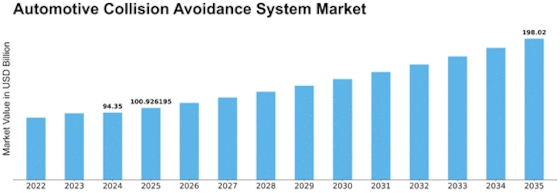

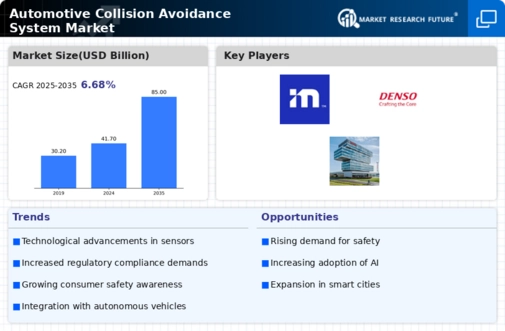
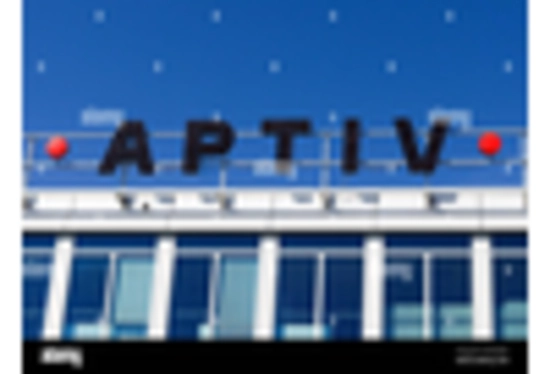
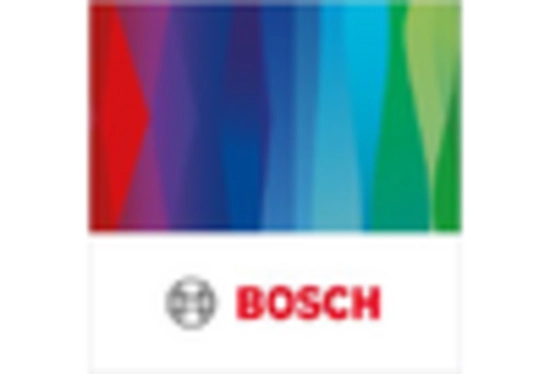

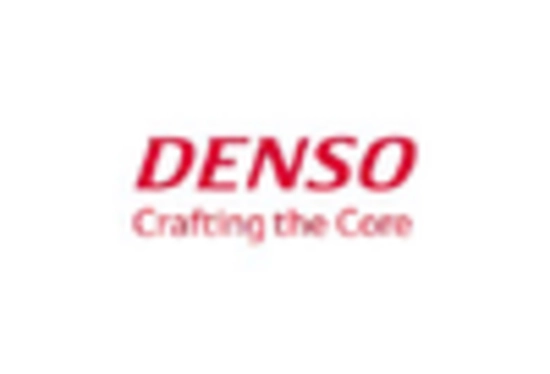
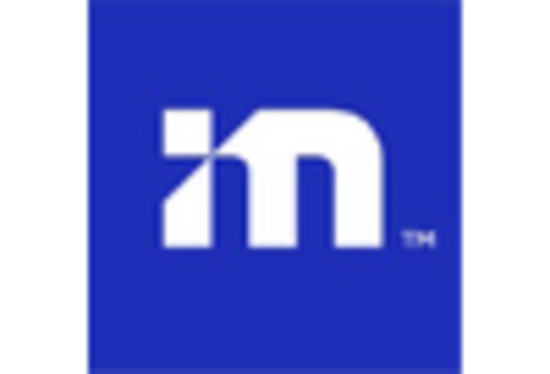
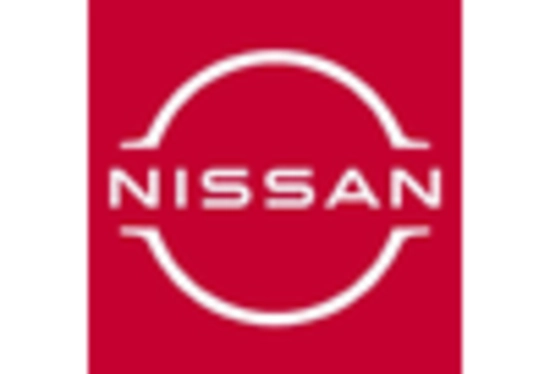

Leave a Comment